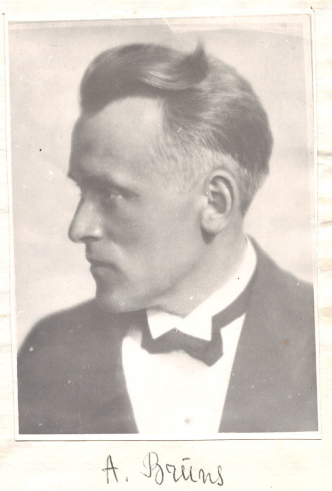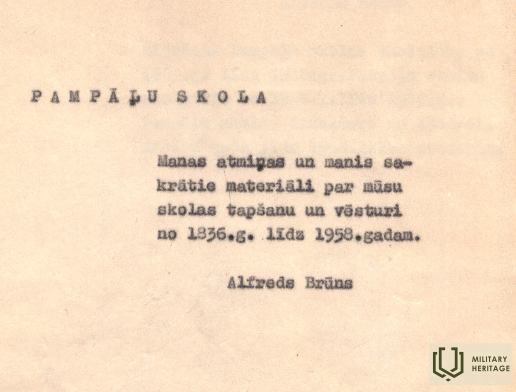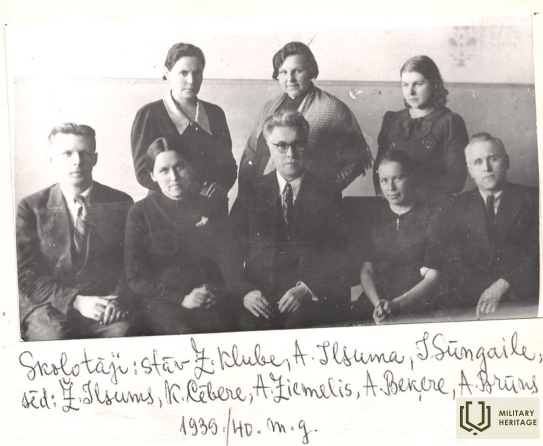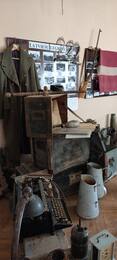Vokiečių armijos divizijos štabo požeminis bunkeris prie „Sirsninių“ namų Pampaliuose
Alfredo Browno pasakojimas apie vokiečių štabą jo gimtojo namo kieme, kur vokiečių kareivis vedė Alfredą užrištomis akimis po nakties priedanga, nežinodamas, kad šis namas yra jo gimtasis namas ir Alfredas net užsimerkęs pažįsta kiekvieną kieme esantį akmenį.
Buvęs Pampalio mokyklos direktorius (iki 1959 m.) Alfredas Brownas 1961 m. vasarį rašo laišką savo pusbroliui Reiniui Hartmanui į Didžiąją Britaniją. Reinis H. siunčia perrašytus A. Brunso laiškus savo sūnui į Australiją. Laimingo atsitiktinumo dėka sąsiuvinis su perrašytomis raidėmis atsiduria Pampalyje pas Artūrą Hartmanį, kuriam priklauso įspūdinga privati Pampalių apylinkėse rastų Antrojo pasaulinio karo dirbinių kolekcija.
Pirmasis Alfredo Browno laiškas 1961 m. vasario mėn.
[…] Neįtikėtina, kad praėjo 16 metų ir 3 mėnesiai, kai „Širdžių“ laukas liko tuščias ir tylus. […]
Iš visų žmonių aš paskutinis pasilikau mūsų pusėje. Penkios savaitės iki 1944 12 20. Likau vienas Pampalio mokykloje. Likau mokyklos rūsyje ir laukiau, kol praeis frontas. Per šias penkias savaites patyriau daug bauginančių, bauginančių ir pavojingų dienų, kol mokykla buvo priešakinėje linijoje. Mokykla buvo palaidota minosvaidžiais, šautuvų kulkos raižė sienas, tankų šūviai, artilerijos, lėktuvų bombos ir taip penkias savaites viename pragare.
Pagaliau ir man tai pateko į nervus.
1944 m. gruodžio 20 d. buvau išvežtas prieš uraganą ir mokyklos sudeginimą. Gruodžio 20, 23 ir 24 dienomis sudeginau mokyklą. Aš pamačiau švytėjimą iš tolo (Luki) dvi naktis iš vietos. Po to iki kapituliacijos gegužę prie Ilzumo buvau pabėgėlis Kuržemės maiše.
Kai mane iš mokyklos išvedė vokiečių kareiviai. Man buvo leista naktį įeiti į „Sirsniņķus“ su divizijos vado leidimu pasilikti Lukiuose.
Buvo tamsi naktis, kai kareivis vedė mane už rankos vingiuotais „Sirsninių“ ūkio takais, tada nusileidome gilyn į požeminį bunkerį, kur buvo šviesu ir prie ilgo stalo buvo susirinkę apie 10 vyresniųjų karininkų. Vargšas kareivis negalėjo žinoti, koks pažįstamas šis namas ir jo aplinka, kaip ir aš žinojau kiekvieną vietą, į kurią buvau vedama tamsoje.
Šis požeminis būstas buvo pastatytas tvarto gale, nukreiptame į daubą. Kai grįžau gegužę ir aplankiau „Sirsniņas“, tarp daugybės sugriautų namų ant kalvos išdidus ir nesugadintas stovėjo vienas raudonų plytų namas. Tik vienas kampas link Pumpuri buvo visiškai išdraskytas ir stovėjo neremontuotas apie 12 metų. […]








